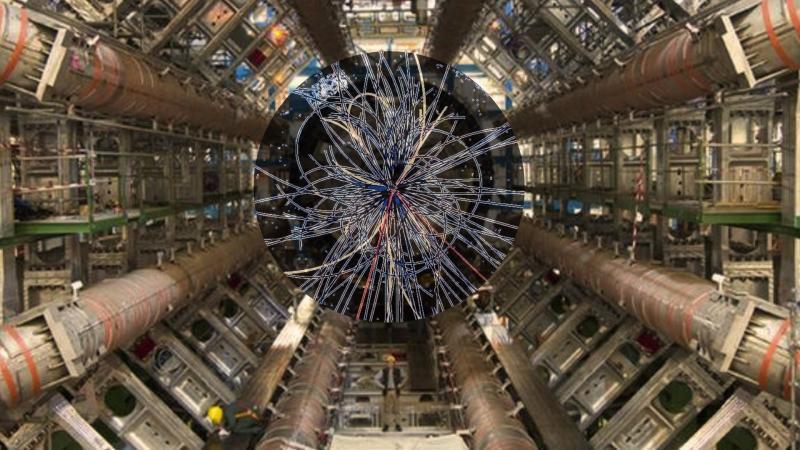
CERN Scientists Shedding Light on Antimatter & Universe’s Origins
The Large Hadron Collider (LHC) at CERN, the European Organization for Nuclear Research, has been the hub of groundbreaking research in the field of particle physics. The LHC’s exceptional capabilities have enabled scientists to recreate the conditions that existed in the early universe, allowing them to study the fundamental forces of nature and shed light on the mysteries of antimatter. Recently, the ALICE (A Large Ion Collider Experiment) collaboration at CERN made a significant breakthrough, confirming the first evidence of antihyperhelium-4 (4He). This discovery has far-reaching implications for our understanding of the universe’s origins and the balance between matter and antimatter.
The Mystery of Antimatter
Antimatter is a fascinating yet enigmatic substance that has long puzzled scientists. When matter and antimatter come into contact, they annihilate each other, releasing a vast amount of energy. This phenomenon is a testament to the fundamental symmetry of the universe, where every particle has an antiparticle counterpart. However, the existence of antimatter is still a mystery, as it is not clear why the universe is dominated by matter.
The ALICE collaboration’s discovery of antihyperhelium-4 is a significant step towards unraveling the mysteries of antimatter. The team produced this exotic particle by colliding heavy ions at the LHC, mimicking the conditions that existed in the early universe. The antihyperhelium-4 particles were then analyzed to gain insights into the properties of antimatter.
The ALICE Experiment
The ALICE experiment is a unique research project that focuses on studying the properties of matter and antimatter in high-energy collisions. The experiment is designed to recreate the conditions that existed in the early universe, when the universe was still in its formative stages. By studying these collisions, scientists can gain insights into the fundamental forces of nature and the balance between matter and antimatter.
The ALICE experiment is particularly well-suited for studying heavy-ion collisions, which are essential for producing antihyperhelium-4. The experiment uses a highly specialized detector system to analyze the particles produced in these collisions, allowing scientists to identify the properties of the antihyperhelium-4 particles.
The Discovery of Antihyperhelium-4
The discovery of antihyperhelium-4 is a significant milestone in the ALICE experiment. The team analyzed the particles produced in heavy-ion collisions and identified a unique signature that indicated the presence of antihyperhelium-4. The detection of this particle is a testament to the power of the LHC and the sophistication of the ALICE detector system.
The discovery of antihyperhelium-4 has significant implications for our understanding of the universe’s origins. The antihyperhelium-4 particles are produced in high-energy collisions, which are thought to have occurred in the early universe. By studying these particles, scientists can gain insights into the conditions that existed in the early universe and the balance between matter and antimatter.
Implications for Our Understanding of the Universe
The discovery of antihyperhelium-4 has far-reaching implications for our understanding of the universe’s origins. The existence of this particle confirms that antimatter is a fundamental aspect of the universe, and that it played a crucial role in the early universe’s evolution.
The ALICE collaboration’s results also provide insights into the fundamental forces of nature that govern the behavior of matter and antimatter. The team’s findings suggest that the forces that govern the behavior of antimatter are identical to those that govern the behavior of matter, supporting the idea of symmetry between matter and antimatter.
The discovery of antihyperhelium-4 also raises new questions about the universe’s origins. Scientists have long sought to understand why the universe is dominated by matter, and why antimatter seems to be relatively rare. The ALICE collaboration’s findings provide new insights into these questions, and may ultimately lead to a deeper understanding of the universe’s origins.
Conclusion
The ALICE collaboration’s discovery of antihyperhelium-4 is a significant breakthrough in the field of particle physics. The team’s findings provide new insights into the fundamental forces of nature and the balance between matter and antimatter. The discovery of this exotic particle also sheds light on the universe’s origins, and may ultimately lead to a deeper understanding of the universe’s evolution.
The research conducted at the LHC is a testament to human ingenuity and the power of scientific collaboration. The ALICE collaboration’s discovery of antihyperhelium-4 is a reminder of the significant advances that can be made when scientists come together to pursue a common goal.
News Source:
https://researchmatters.in/news/exotic-antimatter-spotted-heavy-ion-collisions-lhc






